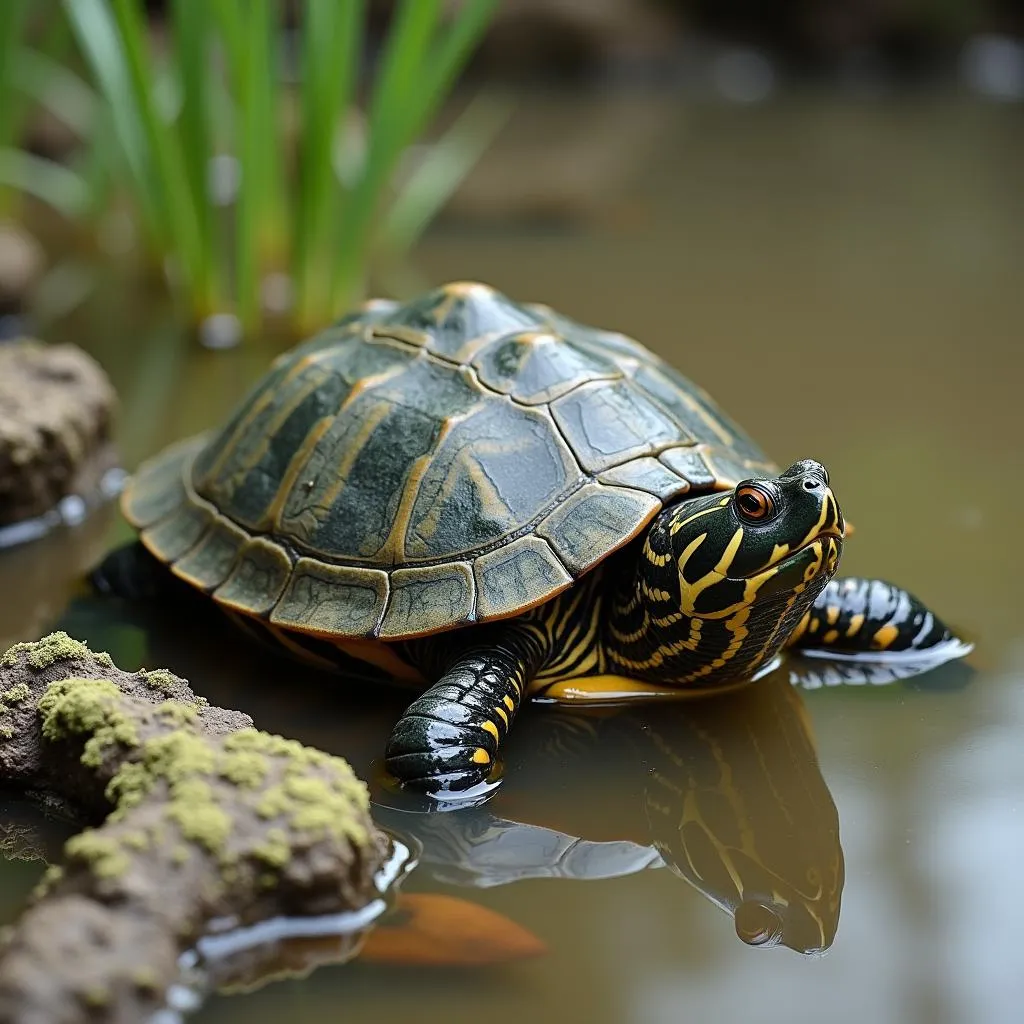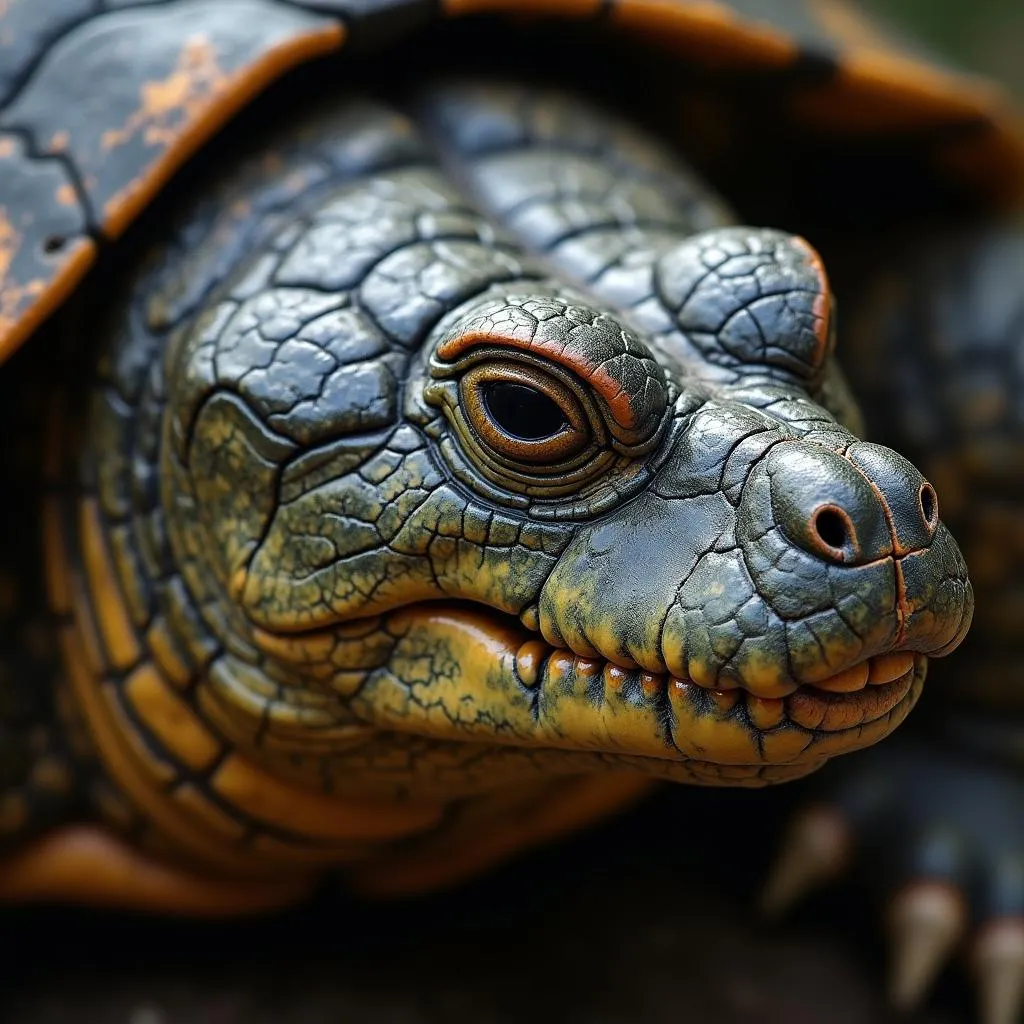Snapping turtles, known for their powerful jaws and prehistoric appearance, are fascinating creatures. But have you ever wondered about their coloration? While we often picture them in shades of muddy green and brown, the answer to “what color are snapping turtles?” is a bit more nuanced than that.
Deciphering the Colors of a Snapping Turtle
A snapping turtle’s color serves both as camouflage and a reflection of its environment and health. Here’s a closer look:
- Basic Palette: Generally, snapping turtles sport earthy tones. Their carapace (top shell) is typically dark brown, olive green, or grayish-black. This coloration helps them blend into the murky bottoms of ponds, lakes, and rivers where they live.
- Environmental Impact: The specific shades can vary depending on their habitat. Turtles living in areas with clear water and sandy bottoms might appear lighter, while those in tannin-rich, muddy environments tend to be darker.
- Algae Disguise: It’s not uncommon to see snapping turtles covered in algae. While this may appear accidental, it actually serves as excellent camouflage, further aiding their ability to ambush prey.
- Health Indicators: A healthy snapping turtle usually has vibrant, clear coloration. Dullness, unusual spots, or discoloration can be signs of illness or stress.
 Snapping Turtle Camouflaged in a Pond
Snapping Turtle Camouflaged in a Pond
Beyond the Shell: More Color Clues
While the carapace holds the most prominent color, other parts of the snapping turtle offer clues about its age and species:
- Plastron: The plastron, or underside of the shell, is typically a pale yellow or cream color. However, in some older turtles, it may darken significantly.
- Skin and Scales: The skin of a snapping turtle is generally gray or brown, matching its shell. However, some species, like the alligator snapping turtle, have distinctive patterns on their necks and legs.
- Eyes: Snapping turtles have dark, beady eyes that often appear black. However, closer inspection may reveal hints of brown or even yellow, depending on the light.
 Close-up of an Alligator Snapping Turtle's Head
Close-up of an Alligator Snapping Turtle's Head
Snapping Turtle Color FAQs
Here are answers to some frequently asked questions:
- Do snapping turtles change color? While they don’t change color rapidly like chameleons, their coloration can subtly shift over time due to environmental factors or health changes.
- What does it mean if a snapping turtle’s shell is too light or too dark? Extreme color changes can be a sign of illness. If you notice any unusual coloration in a wild snapping turtle, it’s best to contact a wildlife rehabilitator.
Appreciate the Colors of Nature
The next time you spot a snapping turtle, take a moment to observe its unique coloration. Their colors are not just aesthetically pleasing but tell a story about their lives, adaptations, and the environments they inhabit.

